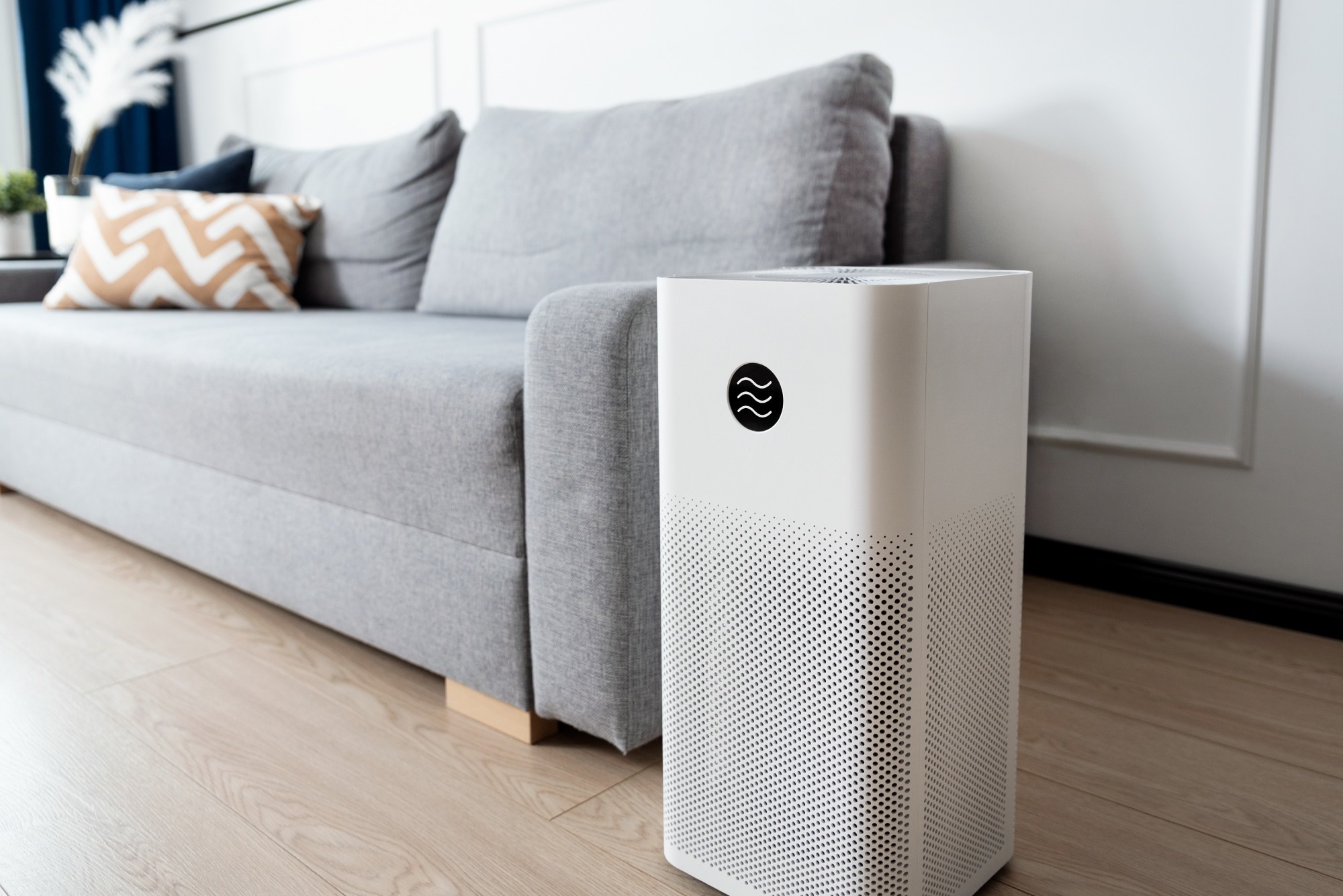
In an evolving health landscape, emerging research continues to highlight concerns that could impact everyday wellbeing. Here’s the key update you should know about:
New research reveals that a simple home air purifier could be a powerful tool for cutting high blood pressure and protecting heart health for people exposed to highway pollution.
Study: Effect of HEPA Filtration Air Purifiers on Blood Pressure: A Pragmatic Randomized Crossover Trial. Image credit: Proxima Studio/Shutterstock.com
A study published in JACC conducted a randomized crossover trial to assess whether in-home high-efficiency particulate arrestance (HEPA) air purifiers influence blood pressure (BP), focusing on individuals with elevated baseline systolic blood pressure (SBP). Researchers found that HEPA air purifiers produced a clinically meaningful reduction in brachial SBP in this group, while no significant overall SBP reduction was seen across all participants.
The impact of pollution on health
Multiple studies have measured high particulate matter (PM) levels in residential areas closer to highways, particularly from tailpipe exhausts, and tire and brake wear. Ultrafine particles (UFPs) (<0.1 μm) and PM2.5 (particulate matter with an aerodynamic diameter of <2.5 μm) easily enter homes that lack proper ventilation, equipped with high-efficiency filtration and recirculation. Individuals living within 200 m of highways with large traffic volumes are exposed to excessive air pollution.
Previous studies have established an association between PM exposure and increased cardiovascular health risk. These studies have also indicated that traffic-related PM exposure increases the risk of elevated BP and hypertension. Studies have also shown that individuals with high systolic blood pressure (SBP) and diastolic blood pressure (DBP) are at a higher risk of heart attack, stroke, and vascular and overall mortality. For example, a 2 mm Hg increase in SBP has been linked to a 7% increased risk of death from ischemic heart disease.
Past research has demonstrated that reduced PM exposure may lower BP, which ultimately reduces deaths due to cardiovascular diseases or stroke. These beneficial effects were also observed in individuals with elevated low-density lipoprotein cholesterol levels and smokers.
About the study
Participants for the current controlled exposure randomized crossover trial were recruited door-to-door over four years, from 2020 to 2024. Individuals who resided within 200 m of at least one high-traffic volume highway (I-93 and Rt-38) in eastern Massachusetts, USA, were considered. They were typically enrolled during cooler months because traffic-generated PM tends to be higher in this period. All participants were above 30 years of age and could respond to questionnaires in English or Spanish.
The study excluded individuals who smoked or vaped, those on antihypertensive or anti-inflammatory medications, people with recent major cardiovascular events or cancer treatments, those with significant indoor combustion sources (beyond cooking), occupational traffic pollution exposure, or active COVID infection.
Homes were randomly assigned to begin using HEPA air purifiers for one month or identical “sham” purifiers with the filters removed for one month. After this first month, all devices were removed for a one-month “washout” period with no air filtration, and then households switched to the other type of purifier for another month.
The current study used HealthMate air purifiers manufactured by Austin Air. HEPA filters used in this research were made of 5.5 m2 of medical-grade material, which removed particles of size <0.3 and <0.1 μm with >99% and 95% efficiency, respectively. The sham filtration consisted of the same units with the filter removed.
All participants completed the questionnaire at baseline and three subsequent home visits. They provided information about smoking status, health status, activities, and social stress. BP was collected four times: at the beginning of the study and at the end of each filtration period.
Study findings
The current randomized crossover trial included 154 participants from 108 residences. However, 153 participants received 30 days of HEPA filtration, and 152 received 30 days of sham filtration.
The study cohort comprised 59.7% females, 68.2% non-Hispanic Whites, 18.7% Hispanics, and 82.9% working part-time or full-time. Most participants were of higher socioeconomic status, with the majority being college graduates and having household incomes exceeding USD 85,000 per year. The mean age of the participants was 41.1 years. The mean brachial SBP/DBP at baseline was 118.8/76.5 mmHg.
HEPA filtration significantly reduced PM2.5 concentration compared to outdoor and indoor sham filtration. The mean PM2.5 concentrations over 24 hours were 3.9 μg/m³ (outdoor), 5.2 μg/m³ (indoor sham), and 2.5 μg/m³ (HEPA filtration). The mean particle number count (PNC) concentrations over a 24-hour period were estimated to be 10,052, 6,925, and 4,706 particles/cm3 for outdoor, indoor sham, and HEPA filtration, respectively. It must be noted that both PM2.5 and PNC concentrations decreased overnight.
Most BP measurements were obtained between 6:00 a.m. and 8:00 a.m., with 77.5% of all measurements in this window, and the timing of BP measurements was mainly consistent. The current study highlighted a non-significant overall difference of 0.5 mm Hg between HEPA and sham filtration in reducing SBP. Participants who presented elevated brachial SBP at the start of the intervention period exhibited a prominent reduction in SBP by 2.8 mm Hg when they had HEPA filtration. However, these participants underwent a 0.2 mm Hg mean increase in SBP when sham filtration was used.
The sensitivity analysis demonstrated an association between the SBP cut point and the effectiveness of the HEPA intervention. A greater percentage of SBP reduction was found in those who had elevated SBP at the start of the intervention period and had HEPA filtration.
Conclusions
The current study highlighted the benefits of air purifiers for people with elevated SBP in reducing BP, particularly those who reside near highways. No significant benefit was observed for participants with normal baseline SBP.
Future research must conduct a more comprehensive subgroup analysis to determine further benefits of using air purifiers. Considering the lack of adverse effects, the authors encourage vulnerable populations, including those with a preexisting cardiovascular risk, such as elevated BP, and those living near high-traffic roads, to use indoor air purifiers.

